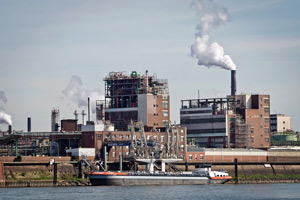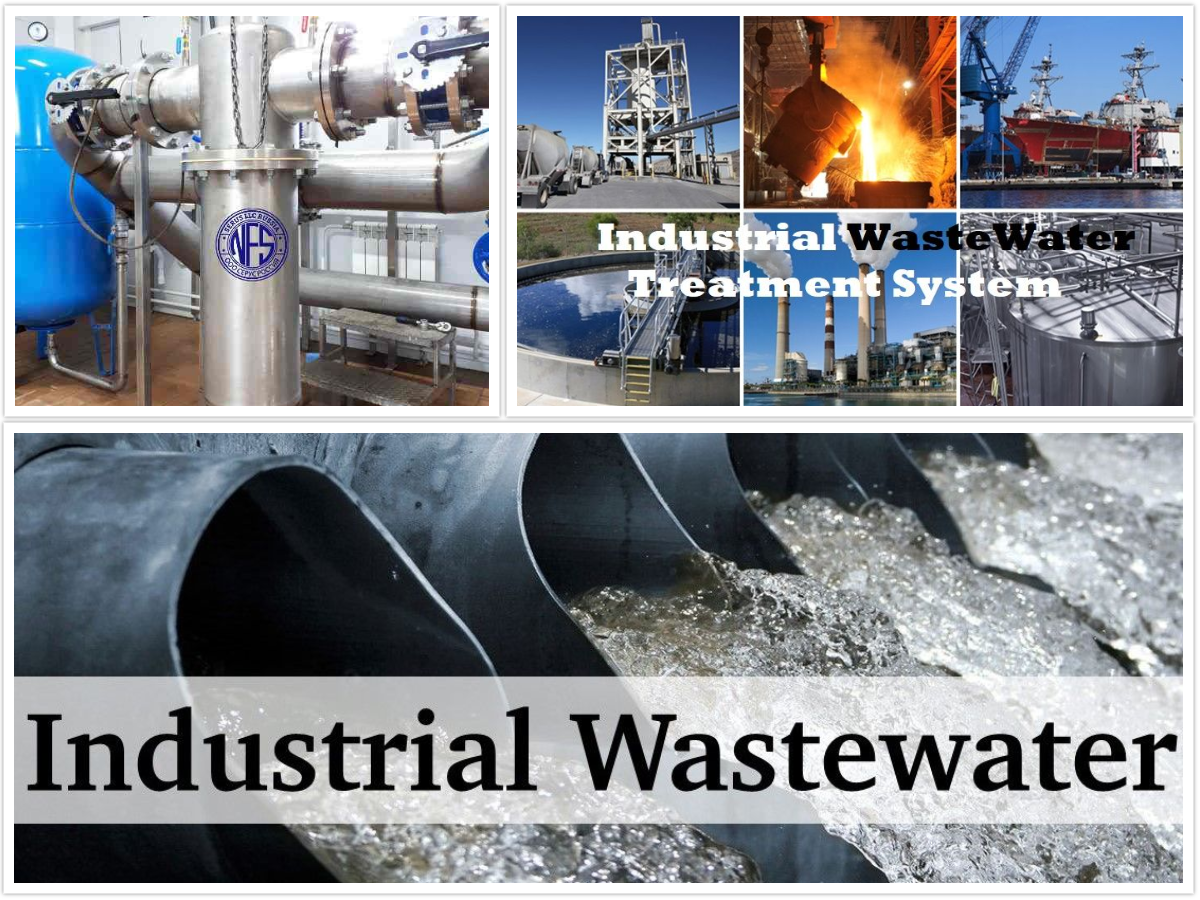Industrial Waste Water Treatment-- Comprehensive Equipments for Wastewater Disposal
Industrial Waste Water Treatment-- Comprehensive Equipments for Wastewater Disposal
Blog Article
Secret Strategies in Industrial Waste Water Treatment Processes
The treatment of commercial wastewater is an essential facet of environmental management, involving an array of techniques created to minimize the effect of pollutants. Advancements in technologies such as membrane layer purification and progressed oxidation processes supply innovative remedies for boosting therapy efficiency.
Physical Treatment Methods
How properly can physical therapy methods attend to the complexities of industrial wastewater? Physical therapy techniques play an essential function in the preliminary stages of wastewater monitoring, focusing primarily on the elimination of solids and big particulates. Methods such as sedimentation, purification, and flotation protection are necessary for minimizing the concentration of put on hold solids, therefore enhancing the performance of subsequent therapy processes.
Sedimentation includes the gravitational settling of solids, permitting the splitting up of heavier materials from the wastewater. This method is specifically efficient in making clear water prior to chemical or organic treatments. Filtering, on the other hand, uses different media to capture particle issue, ensuring that smaller contaminants are eliminated. This technique can be customized to suit various sorts of commercial effluents, producing clearer effluent streams.
Furthermore, flotation techniques, which use air bubbles to lift suspended solids to the surface for elimination, are reliable in treating wastewater with high focus of fats, oils, and oils. In general, physical treatment methods work as an essential initial step in the comprehensive monitoring of industrial wastewater, making sure that the lots on subsequent therapy stages is decreased and enhancing total therapy effectiveness.
Chemical Treatment Techniques
While physical treatment methods prepared for effective wastewater administration, chemical treatment techniques are vital for dealing with the more intricate contaminants typically discovered in industrial effluents. These techniques make use of various chemical representatives to speed up, counteract, or oxidize dangerous substances, guaranteeing an extra thorough removal of toxins.
One common approach is coagulation and flocculation, where chemical coagulants such as light weight aluminum sulfate or ferric chloride are added to promote the aggregation of suspended fragments. This procedure boosts solid-liquid separation, minimizing turbidity and enhancing water quality. Additionally, neutralization processes are utilized to adjust the pH of wastewater, making use of bases or acids to counteract acidic or alkaline streams, respectively.
Oxidation-reduction reactions play a vital duty in degrading organic impurities and virus. Chemical oxidants like chlorine, hydrogen, or ozone peroxide are made use of to break down complex organic substances, making them less hazardous or much more biodegradable. Furthermore, progressed oxidation processes (AOPs) integrate multiple oxidation strategies to improve contaminant removal performance.
Biological Treatment Procedures
The efficiency of wastewater therapy is substantially boosted by organic treatment processes, which harness the all-natural metabolic activities of microbes to disintegrate organic issue and remove pollutants. Industrial Waste Water Treatment. These processes mostly include cardiovascular and anaerobic digestion, each tailored for certain sorts of wastewater
Aerobic therapy processes make use of oxygen to support microbial development, promoting the breakdown of organic toxins right into co2 and water. Common methods include triggered sludge systems, where aeration storage tanks promote the blending of wastewater with microorganisms, and trickling filters, which encourage biofilm development on media surfaces.
On the other hand, anaerobic therapy procedures happen in the lack of oxygen, using anaerobic bacteria to disintegrate organic issue, causing biogas production, a sustainable power resource. Anaerobic digesters are often used in commercial settings for this purpose, efficiently reducing the volume of sludge while generating valuable biogas.
The option of an organic therapy technique depends on wastewater characteristics, therapy objectives, and governing criteria. The integration of organic processes in wastewater therapy not only enhances toxin removal effectiveness however also advertises sustainability by lessening chemical usage and sustaining resource recuperation.
Advanced Oxidation Processes

Usual AOP strategies include Fenton's ozonation, reagent, and photocatalysis. Fenton's reagent, a combination of hydrogen peroxide and ferrous iron, catalyzes the development of hydroxyl radicals, making it effective for dealing with wastewater containing phenolic compounds and various other recalcitrant substances.
AOPs offer numerous benefits, including decreased sludge production and the capability to deal with wastewater with high focus of natural contaminants. The execution of AOPs requires careful factor to consider of functional criteria and cost-effectiveness, ensuring that these advanced methods are appropriately integrated into existing wastewater treatment systems.
Membrane Filtering Technologies

Microfiltration is efficient for eliminating put on hold microorganisms and solids, while ultrafiltration targets smaller sized organic particles and viruses. Nanofiltration links the gap between ultrafiltration and reverse osmosis, successfully removing natural compounds and divalent ions. Reverse osmosis gives the greatest degree of filtration, utilized primarily for desalination and eliminating mono-valent ions.
Membrane layer technologies provide various advantages, including low power consumption compared to typical therapy methods, modular layout for scalability, and the possibility for water recuperation and reuse. Nonetheless, difficulties such as membrane layer fouling and the demand for routine maintenance need to be dealt with to ensure system efficacy. Generally, membrane filtering innovations represent a vital component of contemporary industrial wastewater therapy strategies, advertising sustainability and resource preservation in water monitoring.
Final Thought
Finally, commercial wastewater treatment utilizes a diverse variety of methods, consisting Check This Out of physical, chemical, organic, and advanced methods. Each strategy plays a vital role in properly dealing with various impurities, enhancing water quality, and promoting source sustainability. The combination of these techniques fosters a thorough therapy technique, visit this site guaranteeing that commercial effluents meet governing standards while minimizing ecological impact. Proceeded advancements in these methodologies will further boost the effectiveness and performance of wastewater treatment procedures in industrial settings.
The therapy of commercial wastewater is an important element of environmental management, entailing a variety of strategies created to minimize the effect of contaminants.How efficiently can physical treatment techniques deal with the complexities of industrial wastewater?Advanced oxidation procedures (AOPs) stand for an innovative approach in industrial wastewater treatment, designed to properly weaken organic contaminants that are often immune to conventional treatment methods (Industrial Waste Water Treatment).In final thought, commercial wastewater therapy employs a varied range of strategies, including physical, chemical, biological, and progressed methods. Continued advancements in these approaches will additionally boost the efficiency and efficiency of wastewater treatment processes in industrial settings
Report this page